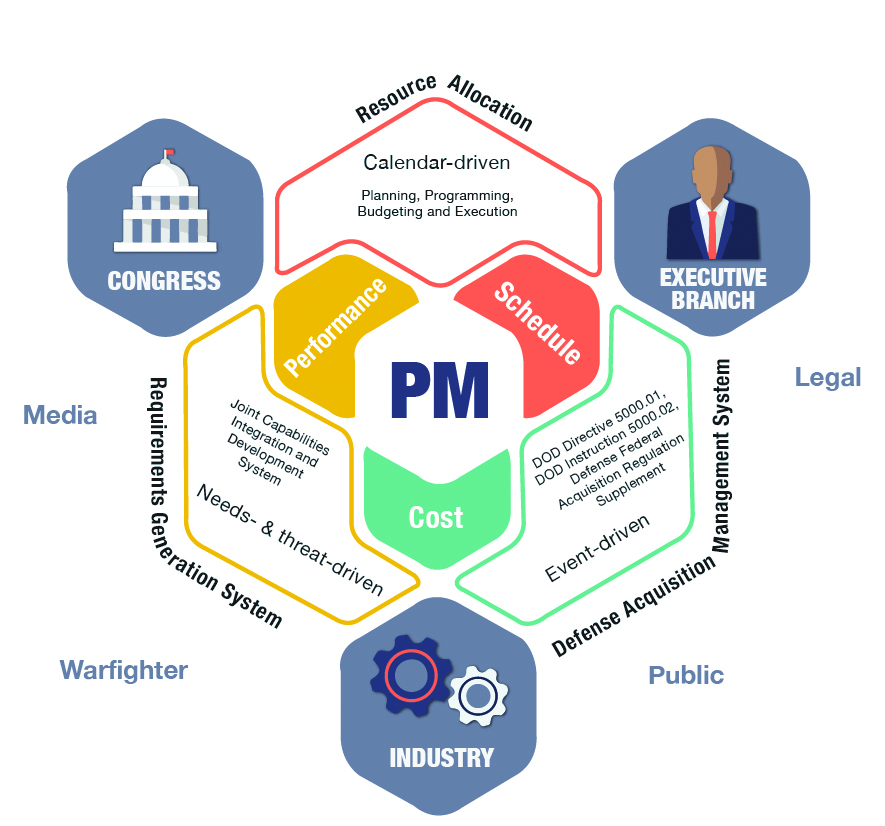
BIG “A” ACQUISITION: The DOD 5000-series regulations spell out layers of bureaucracy and oversight for the Defense Acquisition Management System. (Courtesy of the author)
by Robert F. Mortlock, Ph.D., Col., USA (Ret.)
Defense acquisition program managers (PMs) facilitate the development, testing, procurement and fielding of capabilities to warfighters. The PM is at the center of big “A” acquisition, whose purpose is to deliver warfighter capability. The PM is responsible for cost, schedule and performance (commonly referred to as the “triple constraint”) of assigned projects—usually combat warfighting systems.
The PM has a formal chain of command (or authority) through DOD in the executive branch of federal government. The PM reports directly to a program executive officer, who reports to the component acquisition executive (an assistant secretary for that service—either Army, Navy or Air Force—and who reports to the defense acquisition executive (the undersecretary of defense for acquisition and sustainment). Depending on the program’s visibility, importance and funding levels, a program milestone decision authority is assigned to the appropriate level of the chain of command.
Programs within defense acquisition require resources (primarily funding) and contracts (for execution of work) with industry. Congress provides the resources for the defense programs through the annual enactment of the defense authorization and appropriation acts, which become law and statutory requirements. The PM, through warranted contracting officers, enters contracts with private companies within the defense industry. Other important stakeholders include actual warfighters, the American public, the media, as well as fiscal and regulatory lawyers.
As a backdrop to this complex acquisition environment for PMs, there are three decision support templates to guide programs:
- One for the generation of requirements, known as the Joint Capability Integration and Development System for formal requirements.
- A second for the management of program milestones and knowledge points, generally referred to as the Defense Acquisition Management System (or recently renamed as the Adaptive Acquisition Framework).
- A third for the allocation of resources, known as the planning, programming, budgeting and execution system.
Each of these decision support systems is fundamentally driven by different and often contradictory goals:
- The requirements generation system is driven primarily by a combination of capability needs and an evolving threat—pointing toward the need for a responsive acquisition system.
- The resource allocation system is calendar-driven, with Congress writing an appropriations bill and the president signing the bill every fiscal year—providing control of funding to the Congress and transparency to the American public and media for taxpayer money.
- The Adaptive Acquisition Framework is event-driven by milestones—based on commercial industry best practices of knowledge points and off-ramps supported by the design, development and testing of the systems as technology, system design and manufacturing processes mature.
This sidebar was originally published with the article “Been There, Done That: Who is the Customer?”
Read the full article in the Winter 2021 issue of Army AL&T magazine.
Subscribe to Army AL&T – the premier source of Army acquisition news and information.
![]()


